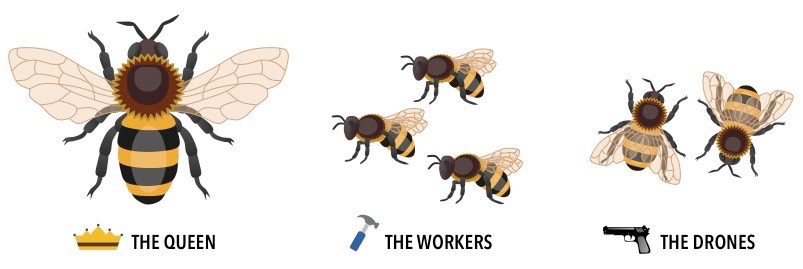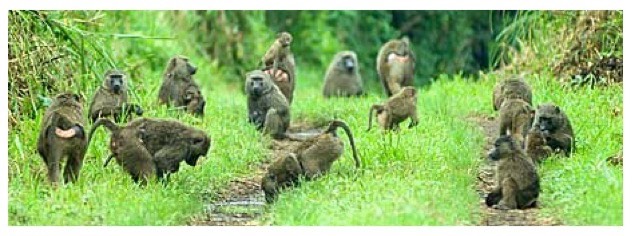Many organisms form social clusters as their survival prospects are improved by cooperative group organisation
- Such social traits are more likely to be passed on to subsequent generations and become frequent in the gene pool
- Types of social organisations include eusociality and dominance hierarchies
Eusociality
Eusociality involves a reproductive division of labour and occurs in honey bee colonies where a caste system exists
- A single queen bee (reproductive female) is responsible for the production of eggs
- A few drone bees (reproductive males) are responsible for the fertilisation of the eggs
- The majority of bees are workers (sterile females) and may be subdivided into various castes - foragers, soldiers, etc.
Eusocial Organisation of Honey Bees

Dominance Hierarchies
Baboons live and interact in small groups called troops (10 - 20 members) organised according to physical dominance
- Troops are structured around dominant females who rank as leaders, while males will move in and out of troops
- Members of the troop do not share food, each individual is responsible for themselves (no division of labour)
- Baboons have no mating season, so females are readily available and highly promiscuous (will take many partners)
- Males will form relationships with females through social activities such as grooming, and may help to defend females and infants
Social Organisation of Baboons

